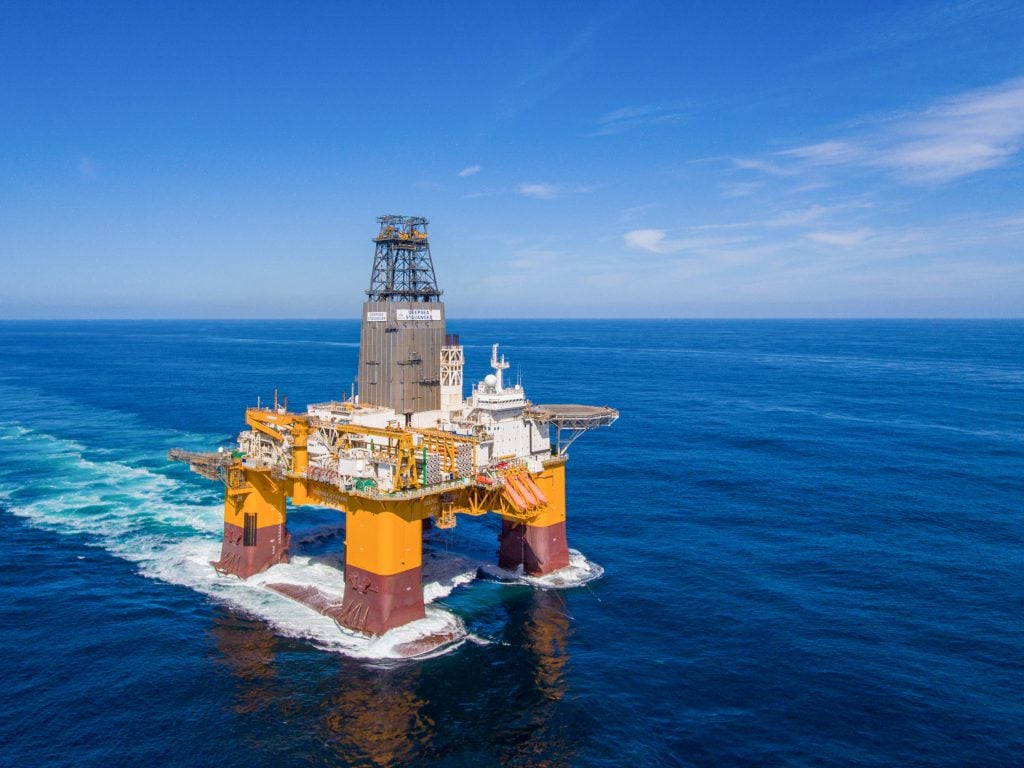The Norwegian company Equinor announced that the results of drilling the appraisal well “16/2-23S” in the North Sea were disappointing.
The state-owned company drilled the well 7.5 km east of the Edvard Grieg field and 10 km west of the Johan Sverdrup field in the North Sea, with the semi-submersible drilling rig “Debsey Stavanger” of Odfjell Drilling.
The well is located in the “BL 265” production license, and Equinor is the operator of the project, as it owns a 42.62% stake, while Betoro owns a 30% stake, and its counterpart Acr BP 27.38%, according to what was monitored by the specialized energy platform, quoting the Offshore website. Offshore Engineer.
Equinor obtained a permit to drill the well in October (2022), which is the 18th exploration well in this license.
Well drilling
According to the report of the Norwegian Petroleum Directorate, issued today, Thursday, February 16 (2023), the offshore discovery dates back to 2009, and the reservoir is located in sedimentary rocks of the Jurassic and Triassic periods.
Before drilling the “16/2-23 S” well, the recoverable resources were estimated at 1.2 billion standard cubic meters of gas.
The objective of drilling the well was to identify Discovery 16/2-5, and to detect additional quantities of oil in Jurassic and Triassic rocks with better reservoir properties in the southern part of the Utsera Hai Formation.
The well encountered traces of hydrocarbons in presumably Jurassic-Triassic conglomerates with poor reservoir properties.
Based on the Norwegian Oil Directorate’s statement, the well was classified as dry with hydrocarbon traces.
lower estimates
The Norwegian Oil Directorate said that the results of the “16/2-23 S” well indicate a significant decrease in resources compared to previous estimates.
She explained that she will conduct a review of the discovery volumes “16/2-5” when the final data from the well is available.
Although comprehensive data was obtained from the well, the depth of the hydrocarbons could not be determined, and no liquid samples were taken.
She added that the well was drilled at a vertical depth of 2,100 meters below sea level in conglomerates presumably from the Jurassic and Triassic periods, and the water depth at the site is 110 meters, with the completion of the well’s capping and leaving it.
Equinor will now move the Dipsi Stavanger drilling rig to drill well 35/10-9 in the S827 production license.
Equinor recently revealed its exploration strategy, which includes drilling to search for hydrocarbons in mature areas, as discoveries can be linked to existing infrastructure, and drill between 20 and 30 exploration wells per year.
It said it will drill about 80% of the exploratory wells in areas near the existing infrastructure, but it will start testing some new areas.
Wells will be drilled based on 3 main criteria: high profitability, low break-even prices, short recovery period, and low carbon intensity.
Veto platform
On the other hand, the Norwegian company Equinor announced today, Thursday, February 16 (2023), the start of production from the Vito platform in the Gulf of Mexico in the United States of America, according to a statement published by the company on its website.

The platform, which is operated by Shell Offshore, a subsidiary of Shell, aims to produce approximately 100,000 barrels of oil equivalent per day.
Shell owns a 63.11% stake in Vito, which is the operator, while Equinor owns the remaining 36.89%.
Shell said the Vito field was the first to use a deepwater platform in the Gulf using a simplified and cost-effective design.
Chris Golden, US director of Norwegian Equinor, said the Vito is a first-rate asset in a key production area of the company.
He noted that the Gulf of Mexico provides some of Equinor’s most valuable barrels, contributing to society’s vital energy needs, while maintaining an emissions reduction strategy to achieve the goal of carbon neutrality by 2050.
The Vito platform uses a streamlined, cost-effective design that was modified in 2015, resulting in an 80% reduction in carbon emissions over its lifetime, along with a cost reduction of more than 70%.
Shell discovered the Vito field in 2009 and made a final investment decision in April (2018).
The field includes 4 blocks in the Mississippi Canyon area, and the recoverable resources are estimated at about 290 million barrels of oil equivalent.

Leave a Reply